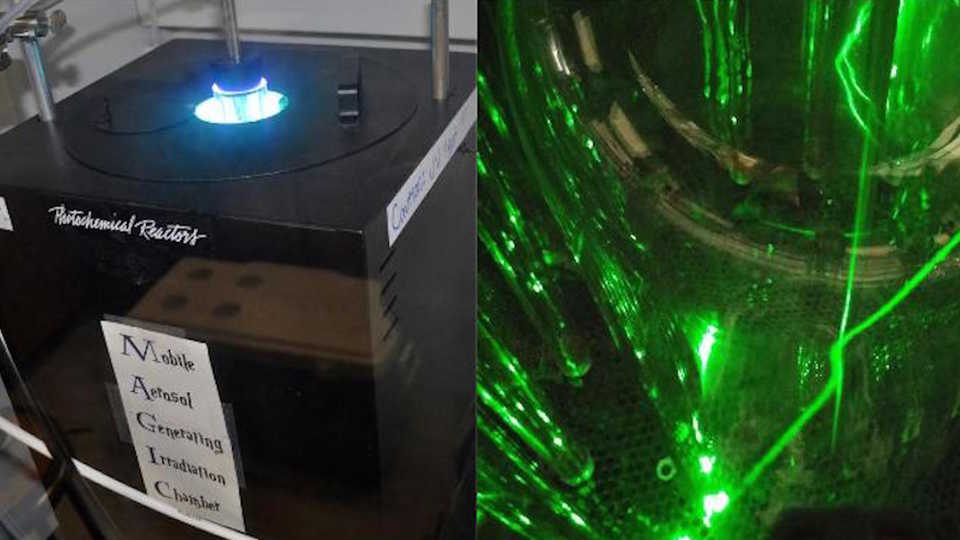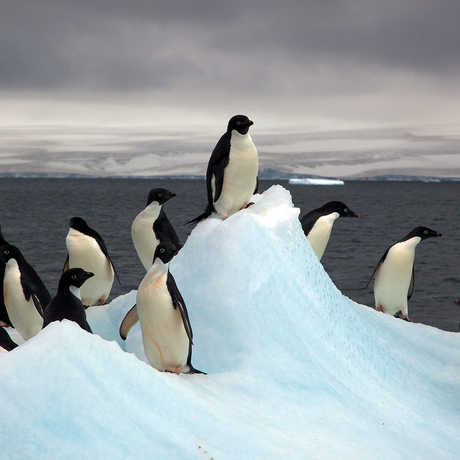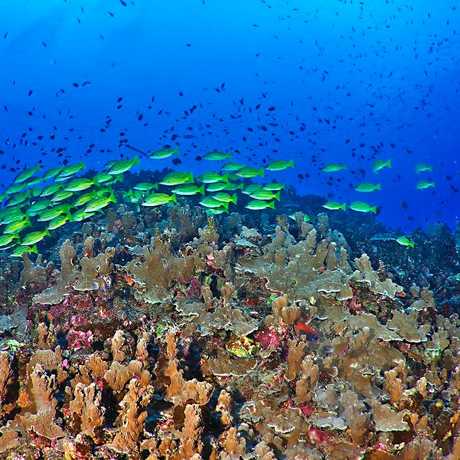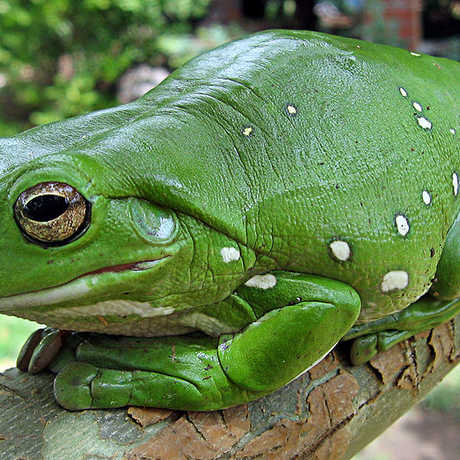Science News
Aerosol MAGIC

“Aerosols are the missing piece of the climate change puzzle,” Mallory Hinks told a packed audience at the second annual University of California Grad Slam competition last month. In under three minutes, the UC Irvine student had to explain aerosols and define her research and why it matters, executing it all with a good sense of humor. The PhD student did a fine job—she received second place and a $3,000 cash prize. Most of the winnings will go into savings, she said over email, but “some will go to buying new clothes for my future career (hopefully) in science policy. The dress code in grad school is quite different from the dress code of working in Washington D.C., I hear.”
Making a difference through her research is why she chose to study aerosols. Carbon dioxide (CO2) gets all of the attention when talking about climate change, but aerosols play a role, too. “Aerosols are still something that we need to know more about,” she says. “It is really interesting to study something that can have important implications for climate change.” So what are they? “Aerosols are any solid or liquid suspended in the air. In the atmosphere, they can be dust, smoke, smog, clouds, and can even be formed through chemistry in the air,” she explains. “Aerosols can affect the climate by their interaction with light. Most aerosols are white meaning they will reflect incoming sunlight back into space which cools down the climate. But black aerosols, like those that come from burning coal or oil, absorb sunlight which leads to a warming effect on the climate.”
But it’s the ones in between that fascinate Hinks. “Some aerosols are actually brown... These brown aerosols can actually change color when they are exposed to sunlight through a process known as photobleaching.” In her talk, she explained that the brown aerosols from smog can turn white by absorbing light, but how quickly that process happens depends on the temperature. In cooler atmospheres the brown will stay brown longer, absorbing more heat, and warming the climate for longer.
To study aerosols, Hinks uses MAGIC—Mallory’s Aerosol Generating Irradiation Chamber. “MAGIC is a device I built to make aerosols that are representative of those found in an urban environment. Its purpose is to make a lot of aerosol really quickly, so that we can study them.” In the Grad Slam competition, she likened some of her work with aerosols to “swimming in peanut butter,” a likely hit with the judges (certainly with this writer). “These aerosols that I study are essentially the consistency of peanut butter, and just like peanut butter, when they are warmed they become thinner and easier to spread and pour. That means that chemistry occurring inside these aerosols can potentially happen faster. My work studies if chemical reactions driven by light are affected by the consistency of the aerosol itself.”
With her research and Grad Slam presentation, Hinks is excited to spread the news about aerosols. “I entered the Grad Slam competition because I wanted to improve my public speaking ability. I wanted to get more practice. I also think that it is important to be able to communicate the research that we do in the lab to non-scientists.” She needs no magic for that—she’s a natural!
Images: Sergey Nizkorodov and Mallory Hinks


